Wilderness Adventures
Hunting along the Limpopo River
The bushbuck is one of the most elusive antelopes to hunt, especially if it’s done in the bushbuck’s natural habitat along the Limpopo River. Follow us as we head off to South Africa for what proves to be a very challenging hunt.
We hear a splash. Then we notice a ripple spread on the green-bottomed surface of the Limpopo River near the opposite bank. We know what that means. Alarmed by the faint sound of the almost silent hunters, another crocodile has slipped from the grass into the river. The ancient animal is just one of many invisible shadows, living here along the river. The professional hunter Marcel Powell stands up and points towards the ripples that slowly spread across the surface.
There is a noticeable fascination in the eyes of the hunter. With a silent nod he confirms the PH’s observation. Marcel makes a quick hand gesture, letting the hunter understand that the stalk continues. After only a few steps, the hunter turns his head to see a reddish shadow sliding into the closest bush to the right. He notices the animal only peripherally but instantly knows that it was a bushbuck – the main game of today's hunt. The hunter is not overly satisfied that the hunting party has been discovered by the game, because it is not the first time it has happened this afternoon. On the other hand, it's a typical situation when hunting bushbuck in its natural habitat along the river.
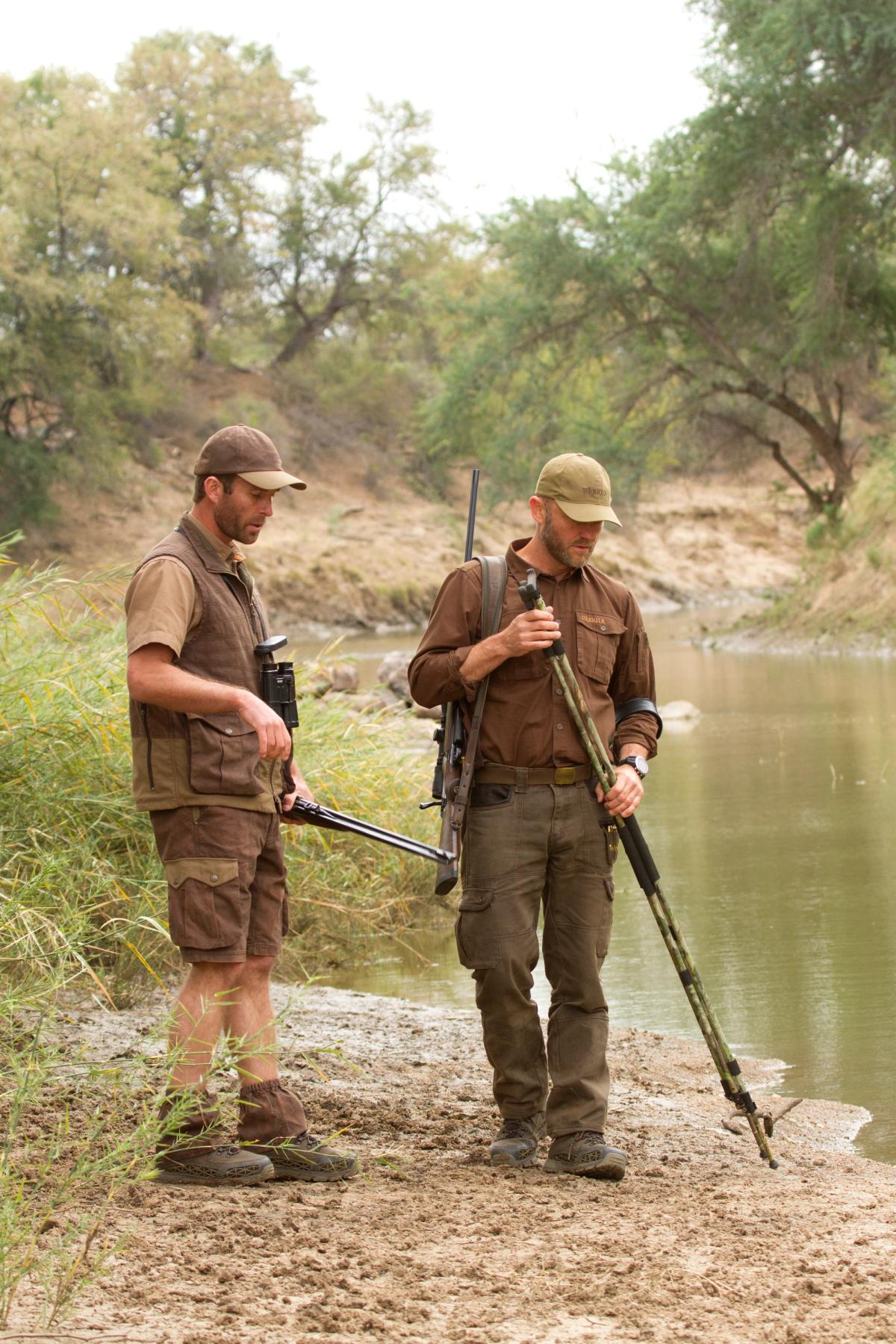
‘Shoot now!’ Marcel whispers with great confidence in his voice. ‘Shoot now, shoot!’
Encounters along the river
Next afternoon we are hunting along the river as we suddenly hear a deep grunt. In his binoculars, Marcel notices two warthog sows in the high grass. We’re not here for warthogs, though. We’re here to hunt for the big bushbuck.
Hunting bushbuck is a very special African kind of hunt. At least when it like here done in the animal’s natural habitat along the river. Bushbuck behaves in many ways as roe deer but in size it’s comparable to a young fallow buck, yet slightly sharper in both behavior as well as body shape. It is a very exciting species to hunt, as the animals live scattered all along the river and rarely move out of their own domain.
To hunt along the river, where the mood, scents and sounds are so different from most bush hunts in Africa, is a thrilling experience. You never know what game to encounter in this kind of terrain as the river attracts countless different species. This is where the crocodile rests on the riverbank, soaking up energy from the sunrays. This is where the leopard attacks its pray when it’s forced to the water of thirst. This is where the hippo rolls itself on the muddy banks to protect itself from the sun.
Marcel sees a movement. This time it's a young female bushbuck, which is jumping from a bush by the shore. As the animal suddenly senses us, it stops. With a look that comes off as a little naive, one ear raised and the second ear hanging down, it stands for a few seconds and just stares at us. We all enjoy the sight of the creature for some seconds before it once again vanishes.
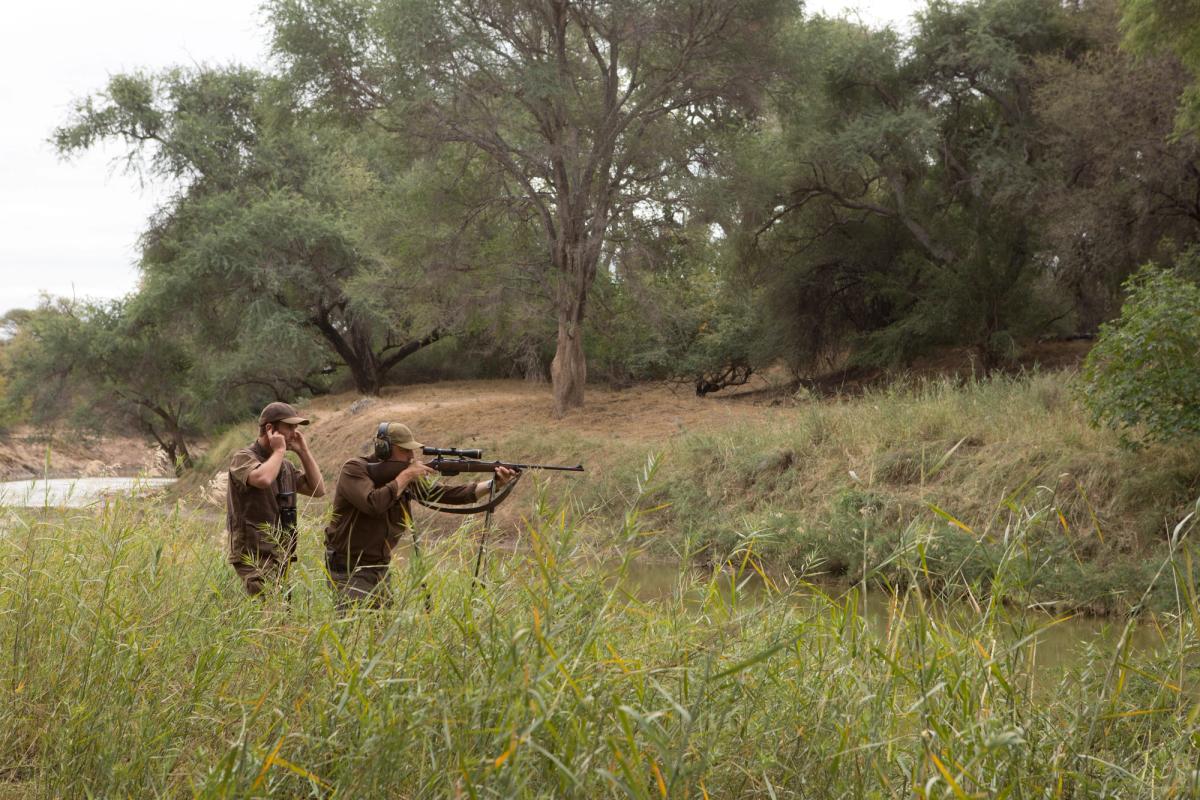
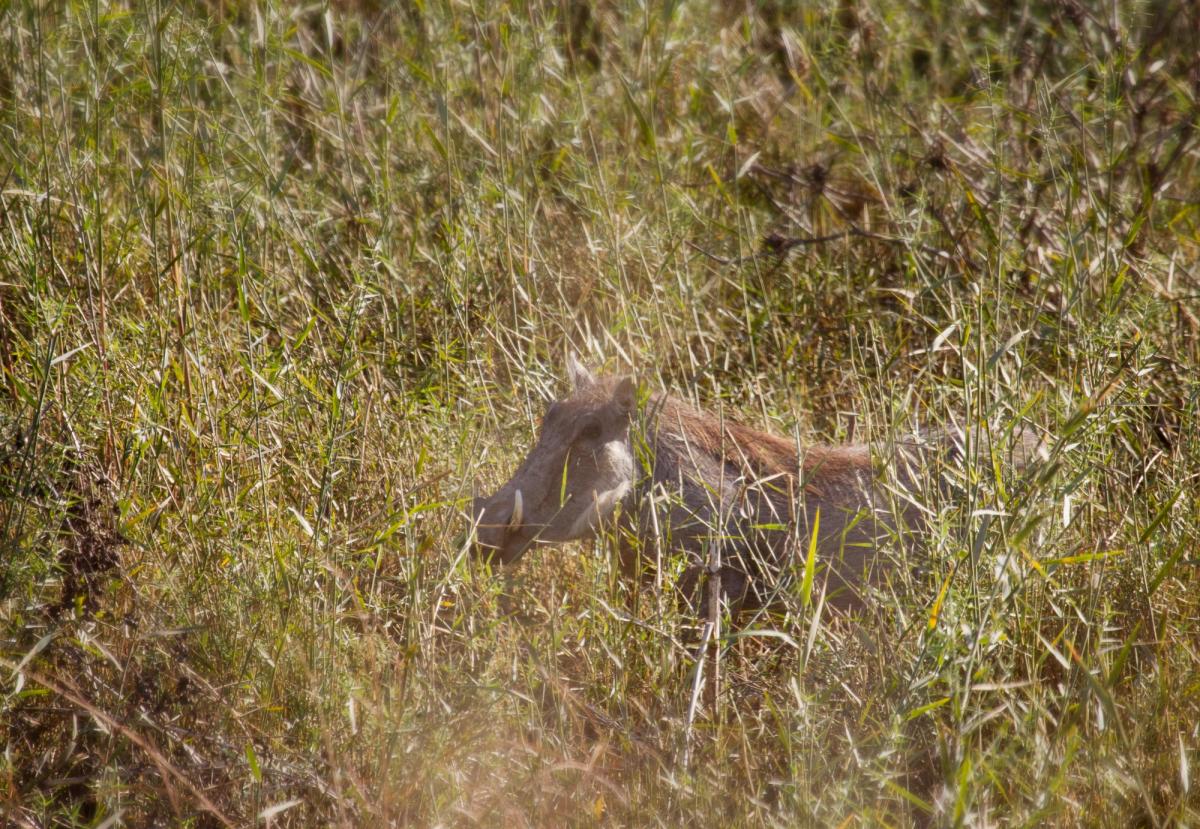
Hippos around
When hunting along a river, you have the advantage that the opposite bank is well exposed, and the game is far easier to see over there. This hunt takes place in South Africa, and the river forms a border to Botswana. That means that we unfortunately can’t hunt on the other side of the river. In addition, it is downright stupid to take the chance and swim after a possible piece of game on the other side of the river. Admitted, it is only 30-40 meters of swim, but it’s a swim among hippos and crocodiles which could prove potentially fatal.
We suddenly notice a shy, spiral horned bushbuck before it notices us. We study it for a few minutes, a little behind it stands a female. Unfortunately, the animals are on the opposite bank.
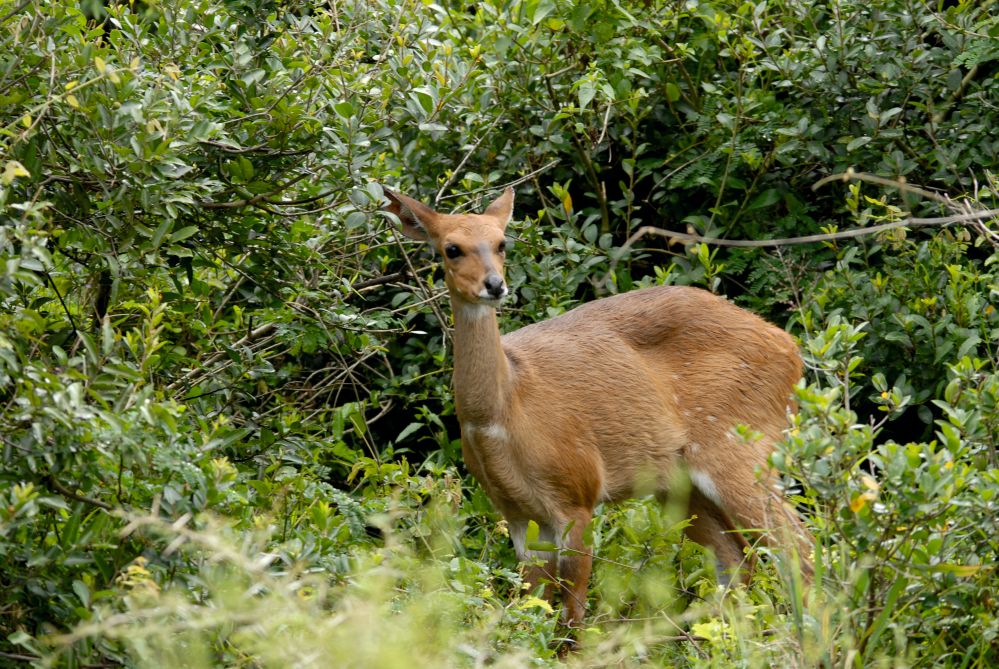
Minutes later, we are again on our way along the more than 12 kilometers of riverbank that’s part of the hunting area. We observe fresh tracks from hippos, and our attention heightens. Despite its size, the hippo is lightning fast and dangerous when attacking, and the bush is very close here. The animals should, however, be on the river itself at this time of the day, but for the sake of good reason, we stay quite alert. Shortly afterwards, we can see that the hippo tracks lead back to the river, and our attention is again focused on the bushbucks.
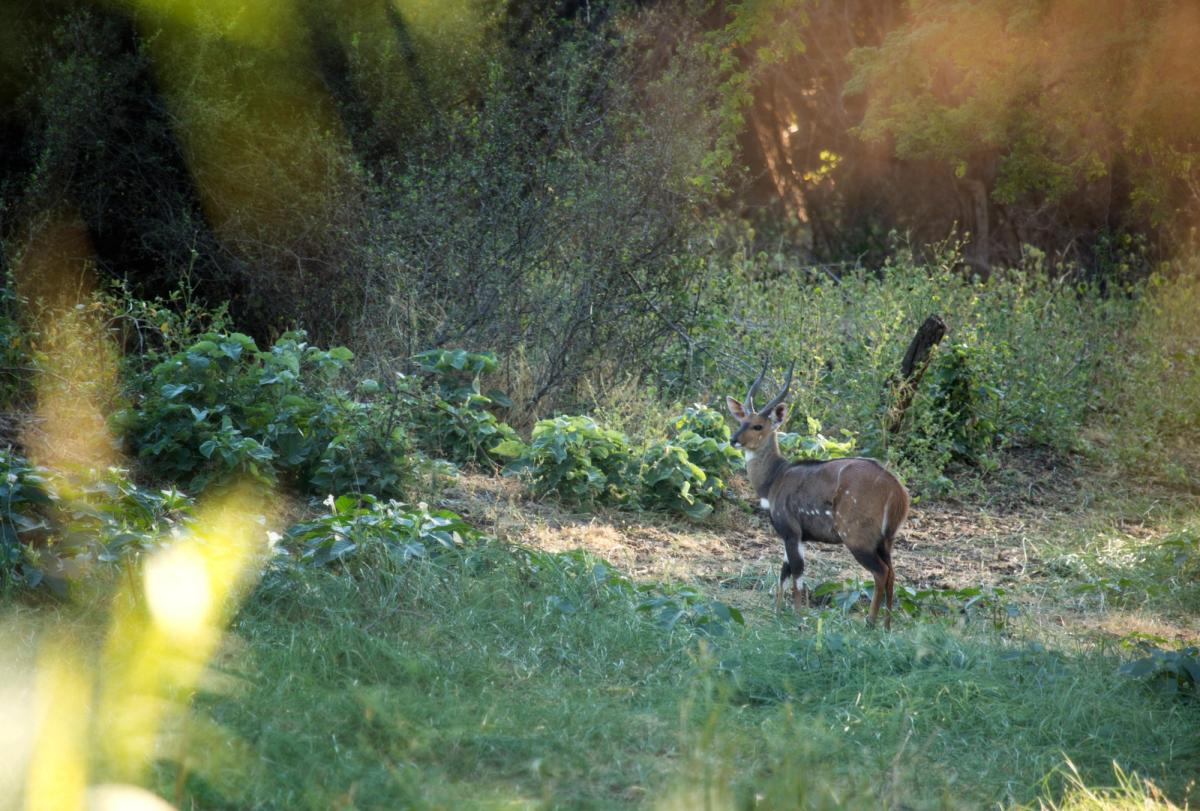
Riverbank shadows
We see another bushbuck running. We see it for a short second as a tan shadow under a bush before it disappears in the tall grass and thick bushes. A little further down from the thicket, we can tell from the high-pitched warning calls of some francolins – a partridge-like bird – that the bushbuck most likely chose that path. The fact that yet another bushbuck got away emphasizes the big challenges one faces when hunting for the bushbuck – it can sometimes feel like you’re chasing a shadow.
The sun is glowing just over the horizon before setting, as Marcel suddenly spots something that might be a great bushbuck. The animal stands with its head hidden behind a tree trunk while the entire body is visible. The hunter can place a shot on the shoulder of the animal, but is it the right animal to take? In Africa, the sun drops against the horizon in a steep curve and the dusk is not something that lasts long, so time is not on our side.
“What do you say about it, does the body size tell you something?” the hunter asks without lowering his rifle. For a while neither the buck nor hunters move. It's as if the bushbuck has sensed that something is wrong, but without being able to locate the danger. “Shoot now!” Marcel whispers with great confidence in his voice. “Shoot now, shoot!”
The hunter pulls the trigger, takes the recoil and watches as the animal runs five steps forward. The buck goes soft in the front legs and tumbles forward in yellow grass. The hunter asks: “How did you know, it was the right animal to take?” “It turned a little bit to orient itself, and when it did, I got a glimpse of its head and knew it was the right one,” Marcel replies. “Congratulations!”

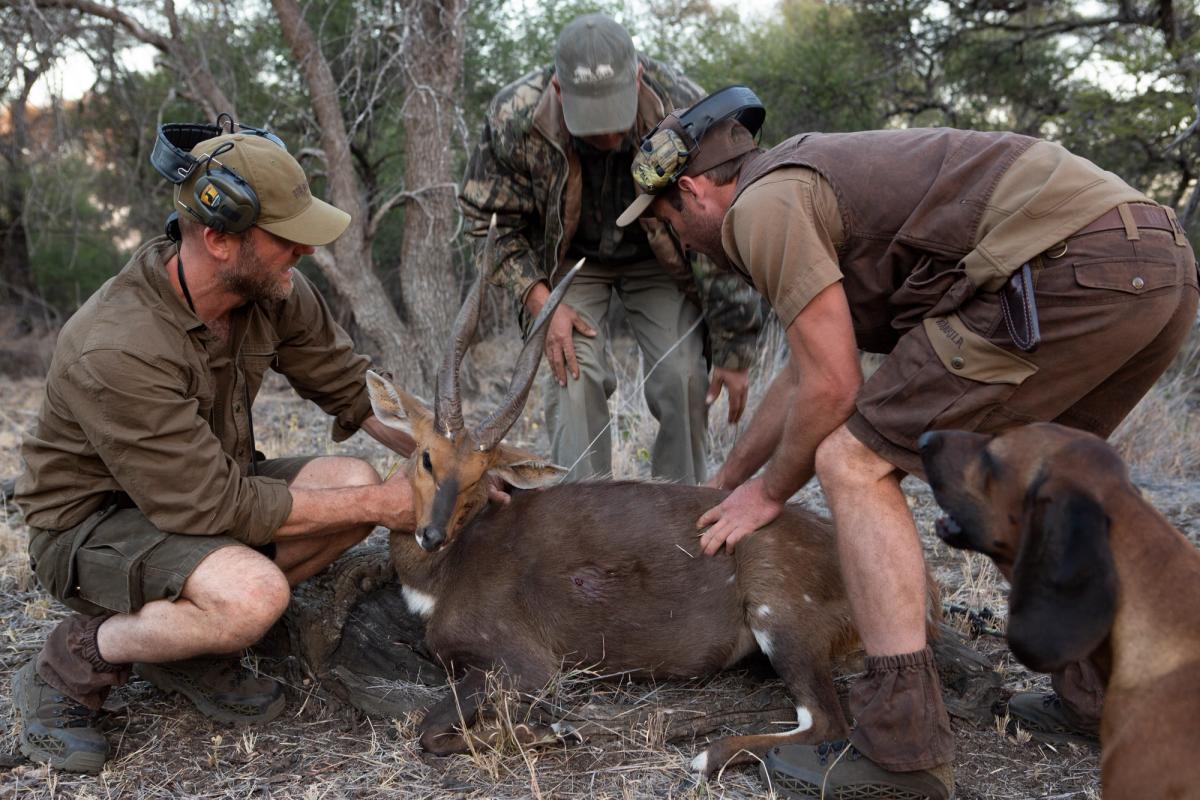
The largest of the year?
While enjoying the sight of the animal in the rapidly diminishing light, a roaring cry breaks the silence. It is not a victorious, confident, or dominant roar. On the contrary, it is the sound of anguish from a larger animal, which at this late hour, just like the bushbuck we just took, ends up as pray. Whether it's a leopard, a crocodile or some other predator that has attacked the animal is hard to tell. But one thing is certain: a life has been taken further down the river.
To take a big bushbuck like the one the hunter has just taken, not only requires experience. It also requires a good hunting area, a skilled PH and good shooting skills. All these things came together on this day to form a fascinating, challenging hunt along the Limpopo River.